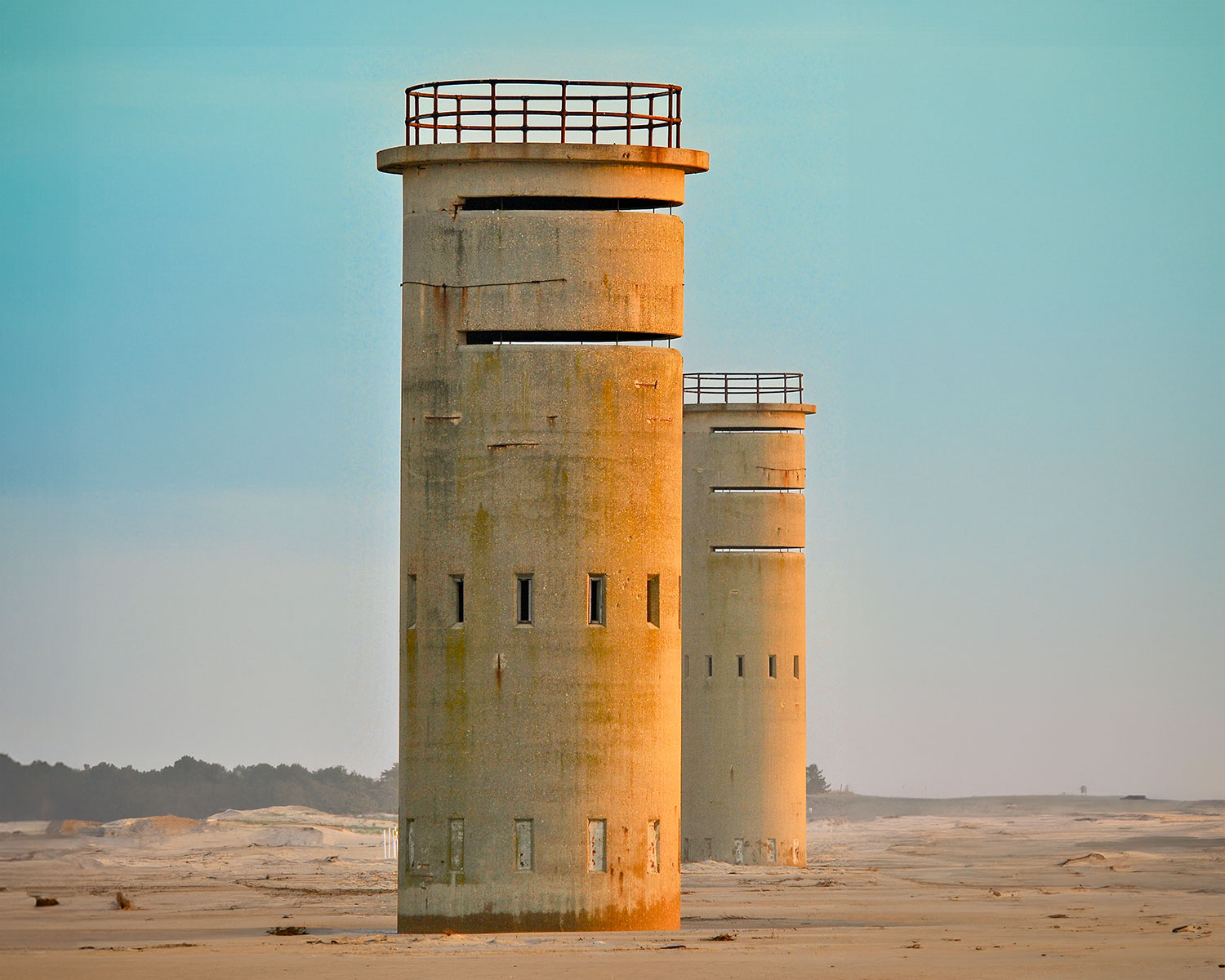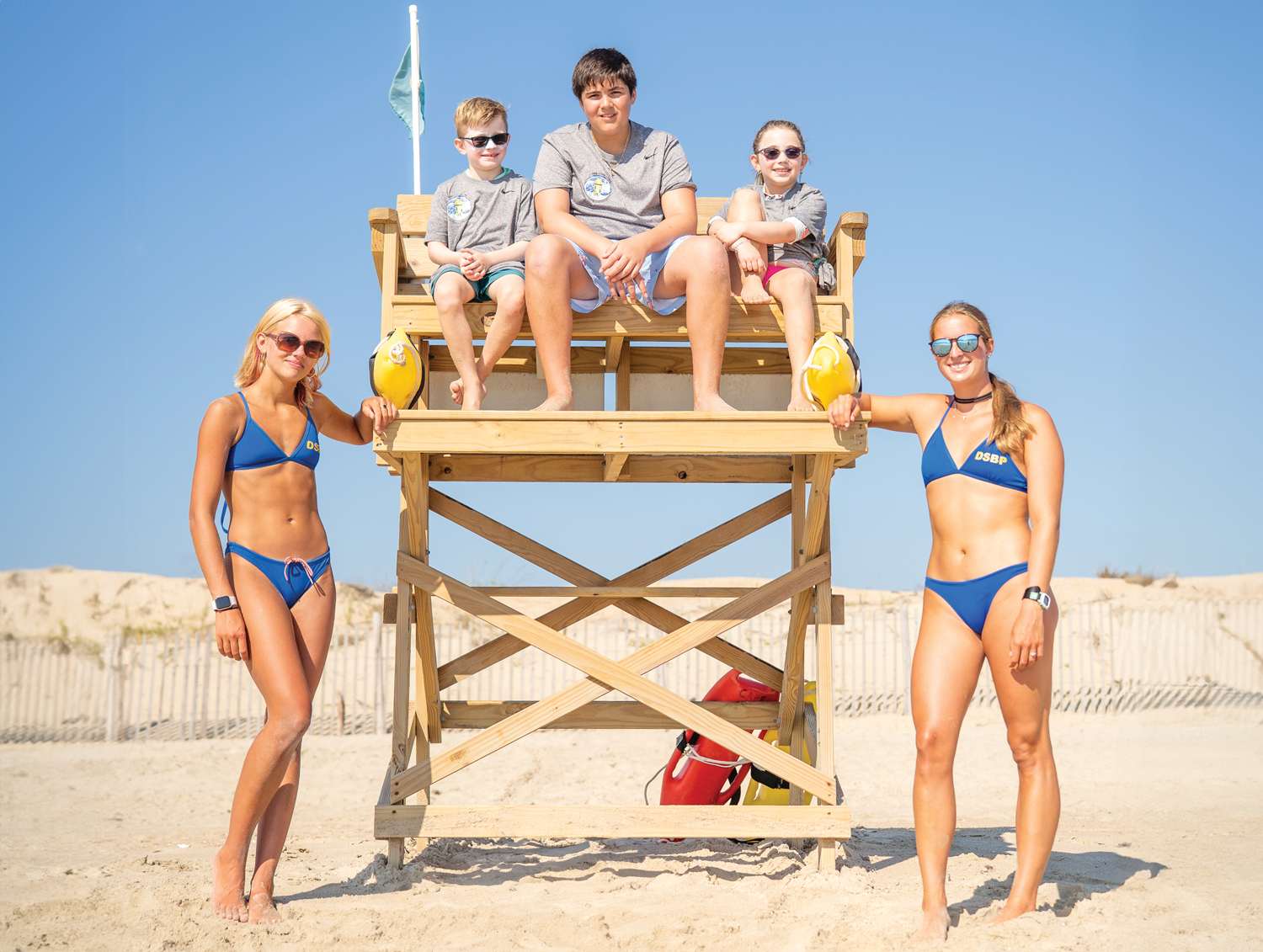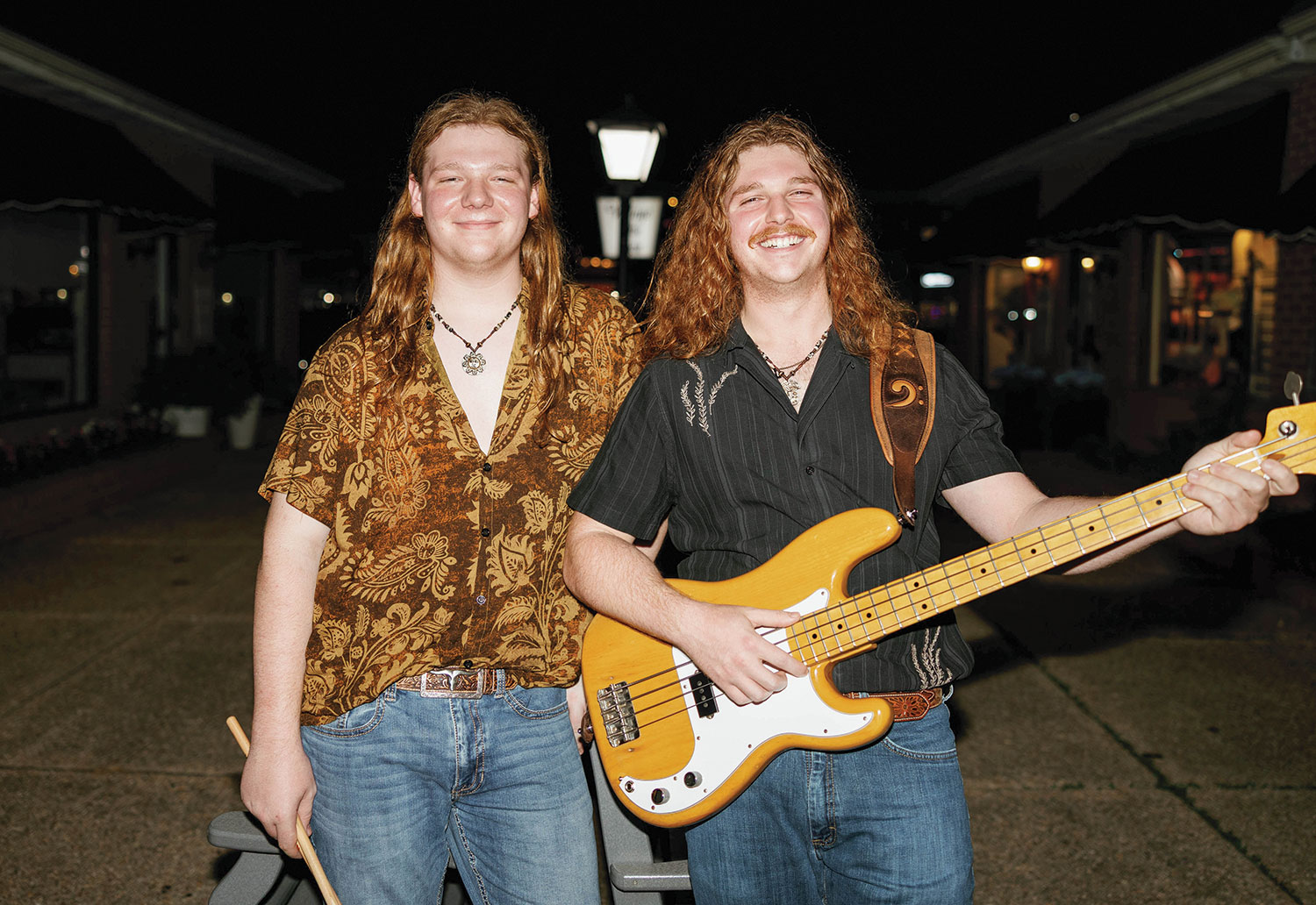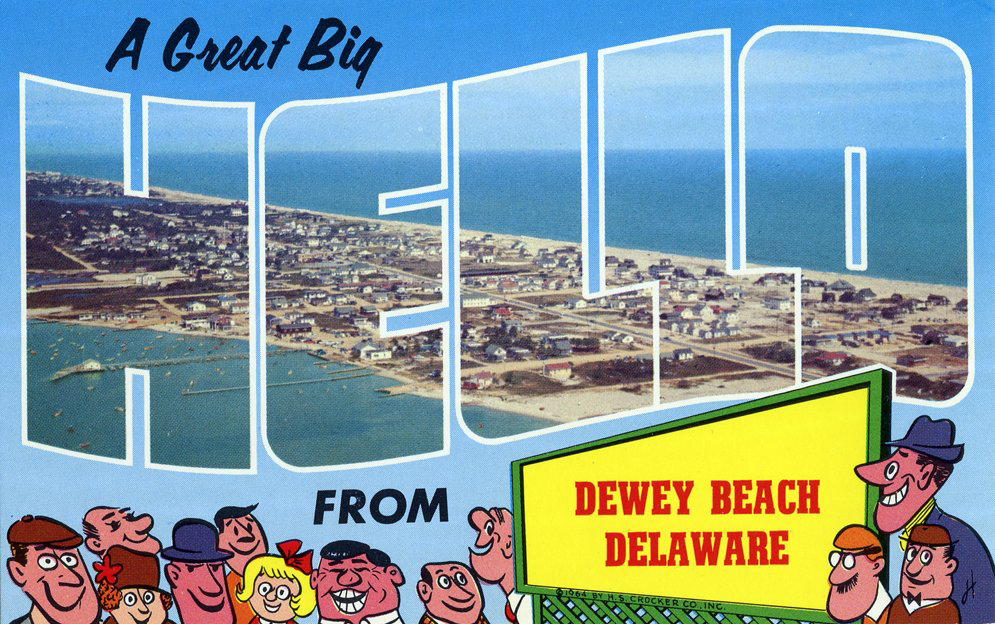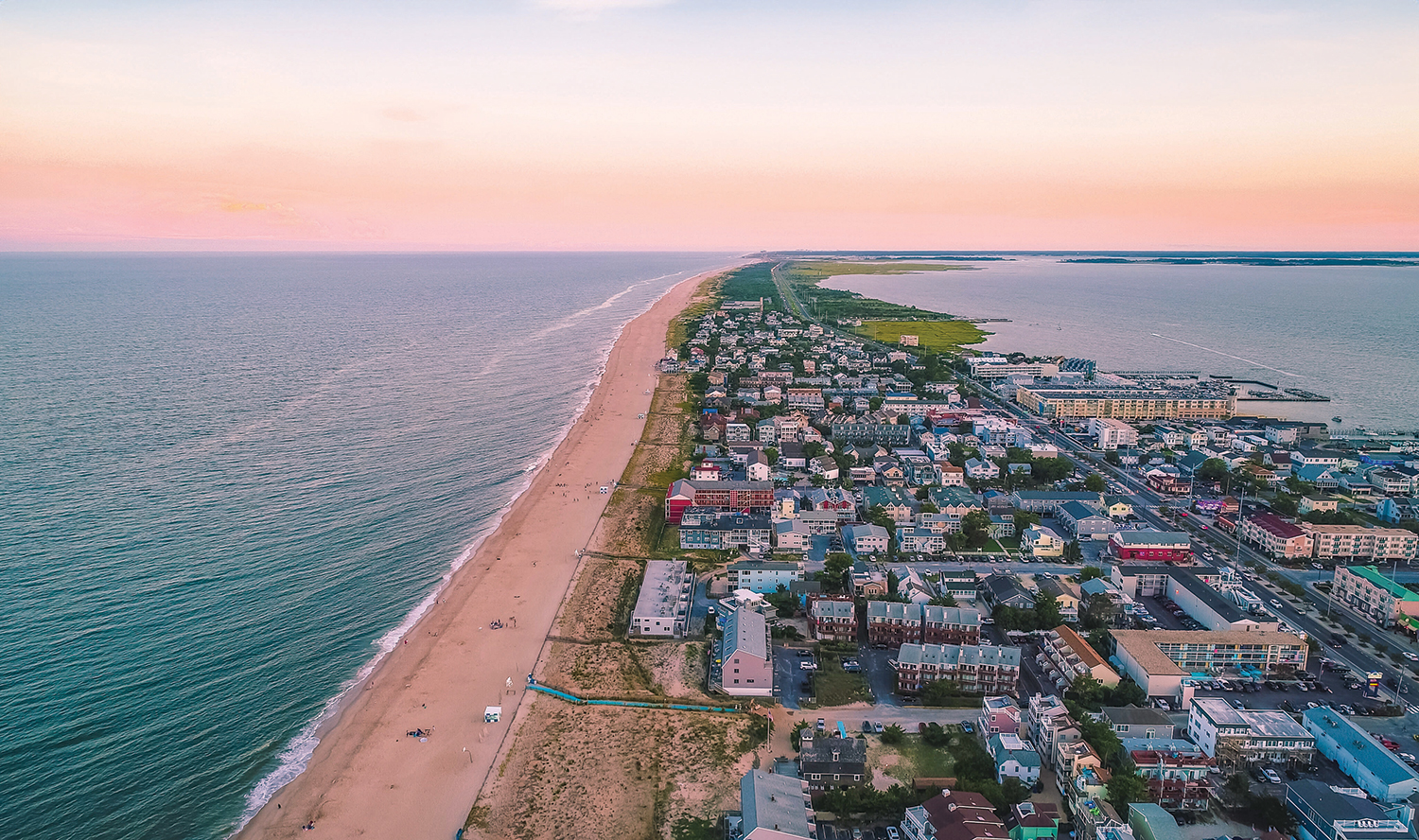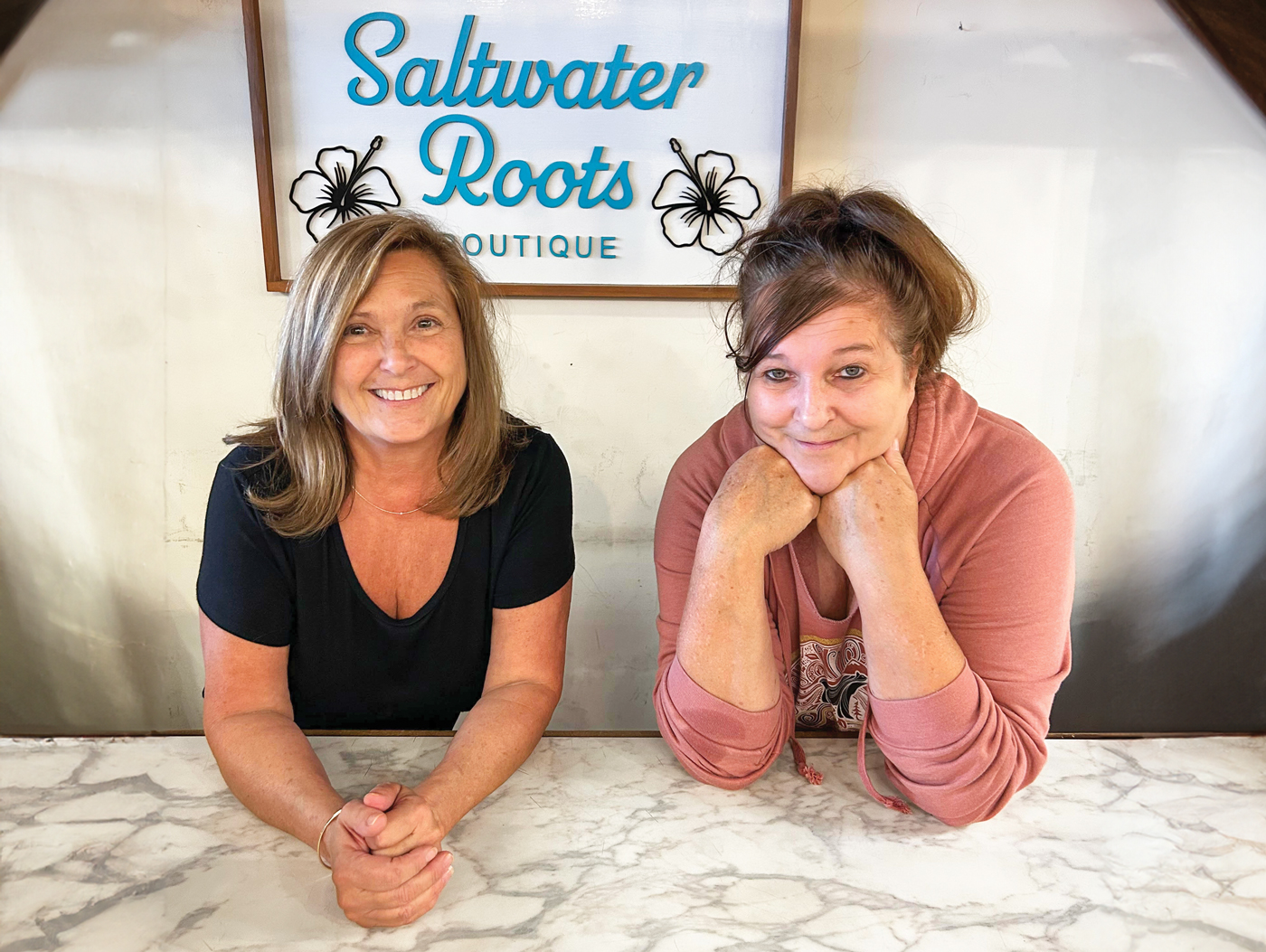Oklahoma is a long way from coastal Delaware, and the landscapes are vastly different. But when Sharon Veazey and her family first visited Cape Henlopen State Park, they were hooked.
“We love the rugged beauty of the park, from its beautifully maintained white sandy beaches to the exceptional walking trails,” says Veazey, who now lives in Lewes.
She’s in good company. In the six decades since CHSP’s dedication, Delaware’s largest state park has touched the lives of thousands of locals and tourists. In fiscal year 2023, nearly 2 million people visited the park.
Its impact spans generations. Melinda Girardi’s kids went to summer lacrosse camp at CHSP. Today, she takes her 5- and 7-year-old grandkids to the fishing pier. Girardi, who moved from Wilmington to Lewes, says her “Zen spot” is Herring Point.
“I take my coffee and my dog for the sunrise. I say some prayers and enjoy the beauty,” she says.
Ami Rae grew up exploring the park’s beaches and trails.
“It’s literally one of my favorite places on Earth,” says the Milton native. “We played disc golf there and got attacked by ospreys protecting their babies. There are a thousand different memories I could put in a montage.”
If there were a film about CHSP’s past, it would include quick cuts of Native Americans, sailors, soldiers, and surfmen.
According to USA Today, “Cape Henlopen Park has seen it all: Native American communities, WWII bunkers and towers, Cold War preparations, and even pirates.” In 2014, the paper listed CHSP among the 20 most stunning state parks in the country.
Understanding the park’s past only makes you appreciate its present even more.
LOCATION, LOCATION
In 1629, the Siconese, an Algonquin-speaking tribe, lived in the Cape Henlopen area. That same year, the tribe sold 8 miles of coastline near present-day Lewes to the Dutch West India Company. The land deal led to the founding of Fort Zwaanendael, a Dutch settlement later destroyed during a massacre.
In 1682, William Penn leased Delaware’s three counties from the Duke of York and dubbed them the “Lower Counties on the Delaware.” That year, Edmond Warner asked Penn for permission to establish a rabbit warren on the coast. Penn agreed with one condition: Aside from the warren, the land and its resources would remain open to the public.
In 1857, the city of Lewes became trustee of this stretch of coastline. Penn’s agreement, known as the Warner Land Grant, is why homes on Lewes Beach are built on leased land. Businesses signed leases too – railroad companies needed sand for tracks, and menhaden fish factories were soon operating nearby.
Cape Henlopen’s value early on was largely due to its location at the mouth of the Delaware Bay. Ships traveling to and from Wilmington, Trenton and Philadelphia relied on this route.
But the waterway was hazardous. Changing currents, shallow shoals, poor navigation, and unpredictable weather led to many shipwrecks. To prevent them, bay and river pilots – who still board ships near Lewes today – were introduced, and the Cape Henlopen Lighthouse was completed in 1767.
In 1828, work began on the Delaware Breakwater, the first of its kind in the Western Hemisphere. A second, the Harbor of Refuge Breakwater, was completed in 1901. Lighthouses stand on both. The Cape Henlopen Lighthouse, however, didn’t survive – by 1926, erosion claimed it, and it tumbled into the sea.
Even with safety efforts, shipwrecks still happened. In 1798, HMS DeBraak sank during a squall. The British warship had left its convoy to chase a Spanish vessel and was rumored to be carrying treasure.
Using sonar, researchers located the wreck in 1985. Salvage efforts recovered a section of the hull, now stored near the park office. The state occasionally opens it to the public. As for treasure – none was found, but thousands of artifacts that reveal life aboard an 18th-century British warship now live at the Zwaanendael Museum.
OFFICIAL BUSINESS
In 1885, ships carrying immigrants anchored near the Delaware Breakwater and raised a yellow flag to signal the quarantine station on Cape Henlopen. Doctors would board to check for illness. If passengers showed symptoms, they were quarantined for up to 60 days. At its peak, the station housed 1,650 people.
The Navy, which had established a radio station on Cape Henlopen in 1906, used the site during World War I. The quarantine station closed in 1926 after processing around 200,000 immigrants. Today, only the foundation of the surgeon’s house remains near the park’s fishing pier.
But it was the Army that left the biggest mark. Fort Miles was dedicated on Aug. 8, 1941. In short order, the Army built roughly 250 buildings and 11 concrete towers for directing artillery fire. One tower is now open to the public.
Bunkers like Battery Herring were once buried beneath the sand. Battery 519, a massive 15,000-square-foot structure, is now home to the Fort Miles Museum. In 2004, the state used one of the batteries to sort artifacts from the Roosevelt Inlet shipwreck. Rae, as a teen, remembers the abandoned concrete bunkers being “spooky.”
The Army declared Fort Miles surplus in 1961. U.S. Rep. Harris McDowell Jr. introduced a bill to return the land to Delaware, and on Oct. 17, 1964, Gov. Elbert Carvel and McDowell joined other dignitaries to dedicate the new 543-acre state park. The military still maintained a presence. The Navy ran Mobile Inshore Undersea Warfare Units into the early 1990s and used Battery Herring as a Cold War-era surveillance base to track Soviet submarines.
In 1996, then-Sen. Joe Biden successfully negotiated the final land transfer – about 2,000 acres – from the military to the state. The former Navy training center now serves as the Biden Environmental Center.
According to the state, CHSP today encompasses more than 5,000 acres, although not all of it is contiguous.
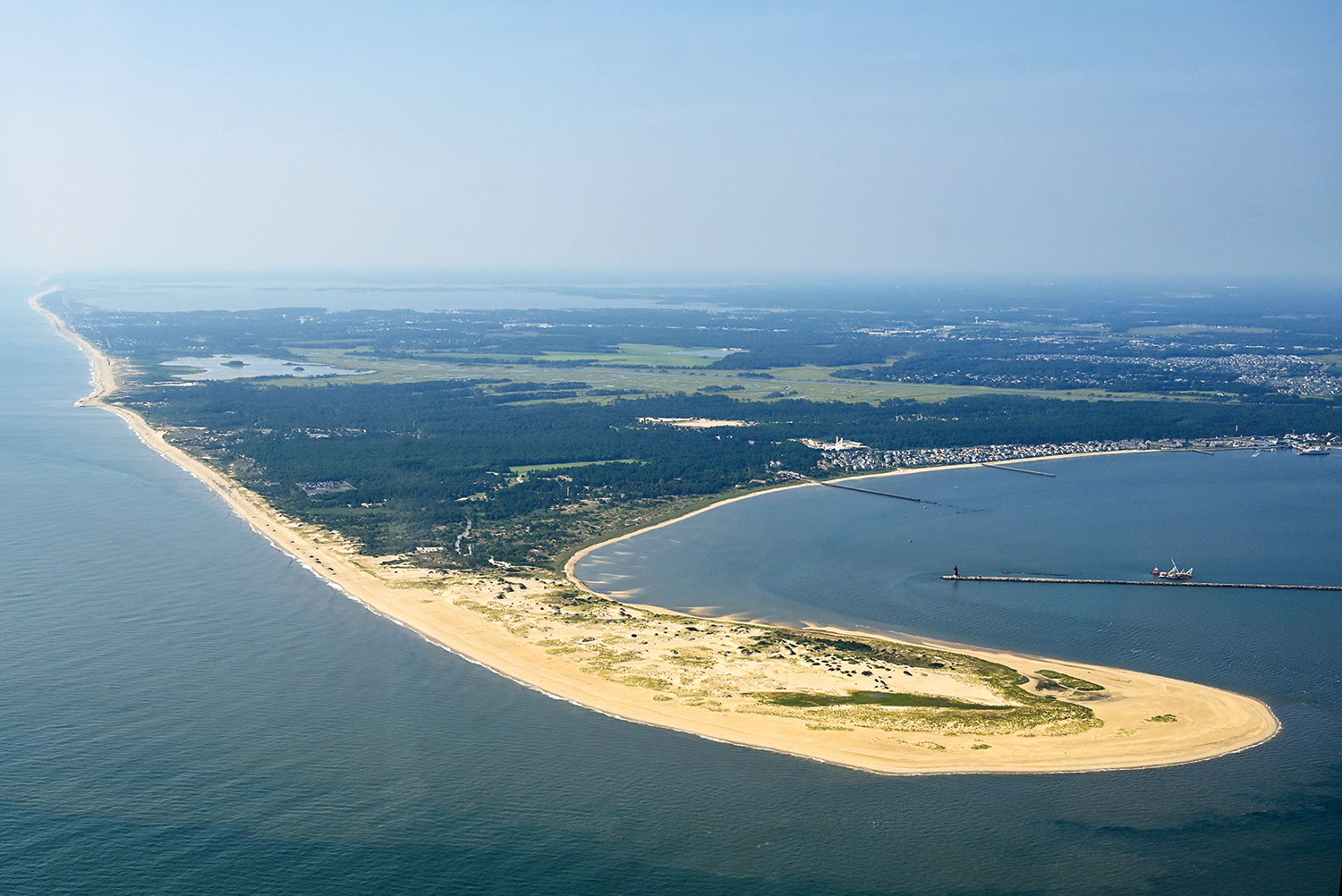
OUTDOOR OASIS
Cape Henlopen State Park opened the same year the Cape May – Lewes Ferry began service and just before local fish factories closed for good. Two years earlier, the Lewes Historical Society was founded by residents who wanted to save and restore historic buildings. It was a turning point for Lewes, and the park became part of its transformation into a thriving resort town.
History lovers can explore the Fort Miles Museum and Historic Area, where artillery once stood watch over the coast. (The original guns were moved, but the museum acquired authentic replacements – some from decommissioned Navy ships.)
The park also hosts the Seaside Nature Center, featuring a 300-gallon, two-level touch tank, interactive exhibits and guided programs, including birding trips. Cape Henlopen is part of the Atlantic Flyway, a key migratory bird route.
The park is a favorite for surfers, too. Shelley Neall, a single mom, spent countless hours there with her sons.
“It was rare that we missed a day, even in the winter months,” she says. “It was a very affordable way to entertain two high-energy boys.”
Anglers head to the pier or to Herring Point, where drive-on surf fishing is popular. In-season deer and waterfowl hunting is permitted in designated areas.
Campers appreciate the balance of nature and accessibility.
“It was a great getaway that didn’t cost too much, and the proximity to the beach was amazing,” says Rich Hanrahan. “I like that it’s not like a beach with a boardwalk.”
Hikers and bikers make use of the park’s many trails, including the scenic Gordons Pond Trail connecting Lewes and Rehoboth Beach.
But for many, the magic of CHSP lies in its natural beauty.
“Nothing beats the Point, where we can experience a sunrise and sunset at the same spot,” Veazey says. “CHSP is a wonderful refuge for all.”
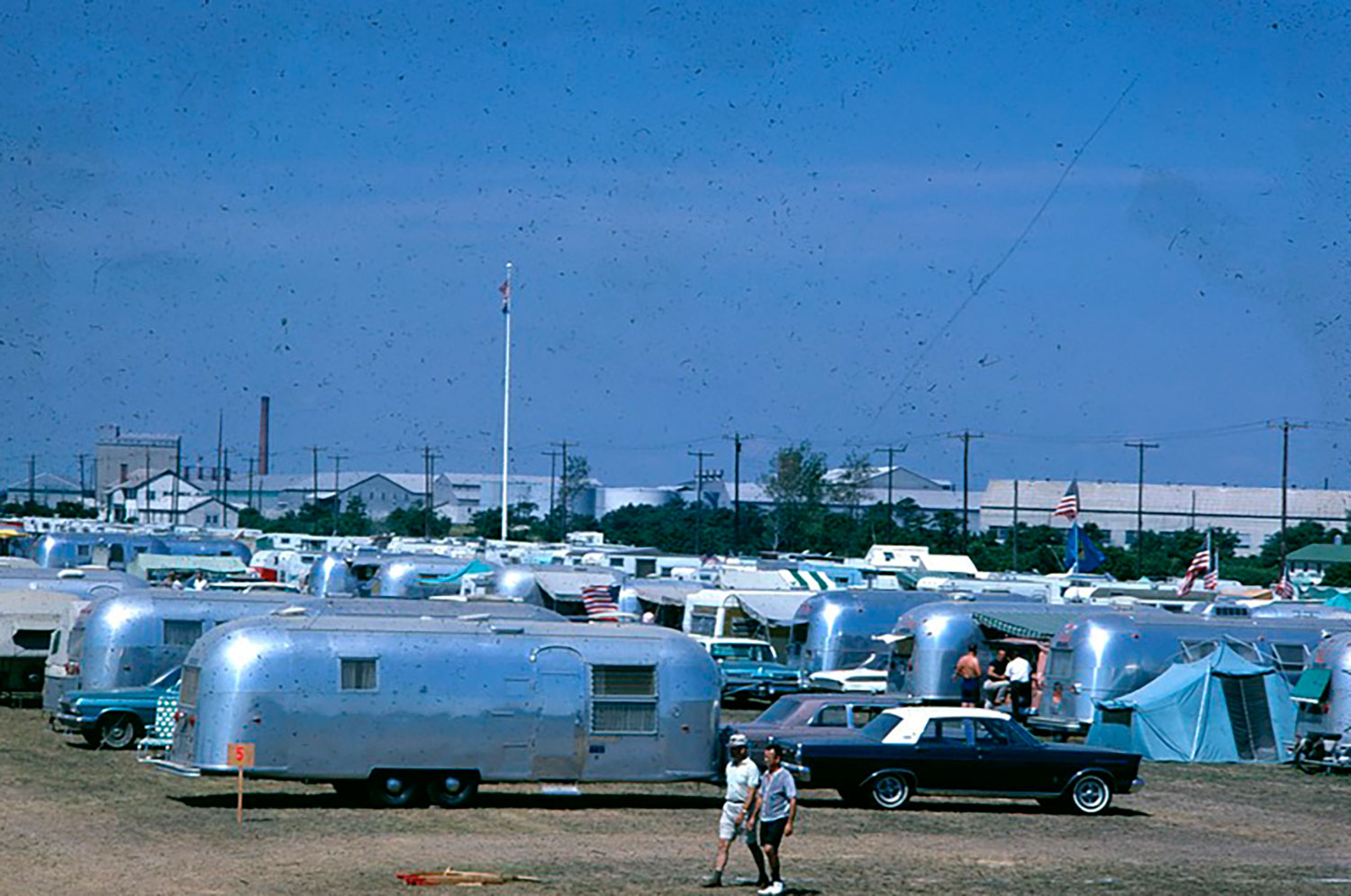
CAPE HENLOPEN STATE PARK TIMELINE
1629 – The Siconese tribe sells 8 miles of coastline near present-day Lewes to the Dutch West India Company, leading to the founding of Fort Zwaanendael.
1682 – William Penn grants the land for public use under the Warner Land Grant.
1767 – Cape Henlopen Lighthouse is completed to help ships navigate the Delaware Bay.
1828 – Construction begins on the Delaware Breakwater, the first breakwater in the Western Hemisphere.
1876 – Cape Henlopen Life-Saving Station opens to assist in maritime rescues.
1901 – Harbor of Refuge Breakwater is completed.
1926 – The original Cape Henlopen Lighthouse collapses into the sea due to dune erosion.
1941 – Fort Miles is established by the U.S. Army to defend the Delaware coast during WWII.
1961 – The Army declares Fort Miles surplus property.
1964 – Cape Henlopen State Park is officially dedicated on Oct. 17, with 543 acres transferred to the state.
1996 – Then-Sen. Joe Biden negotiates the final land transfer from the military to Delaware, including what is now the Biden Environmental Center.
2023 – Nearly 2 million people visit the park in one year.

